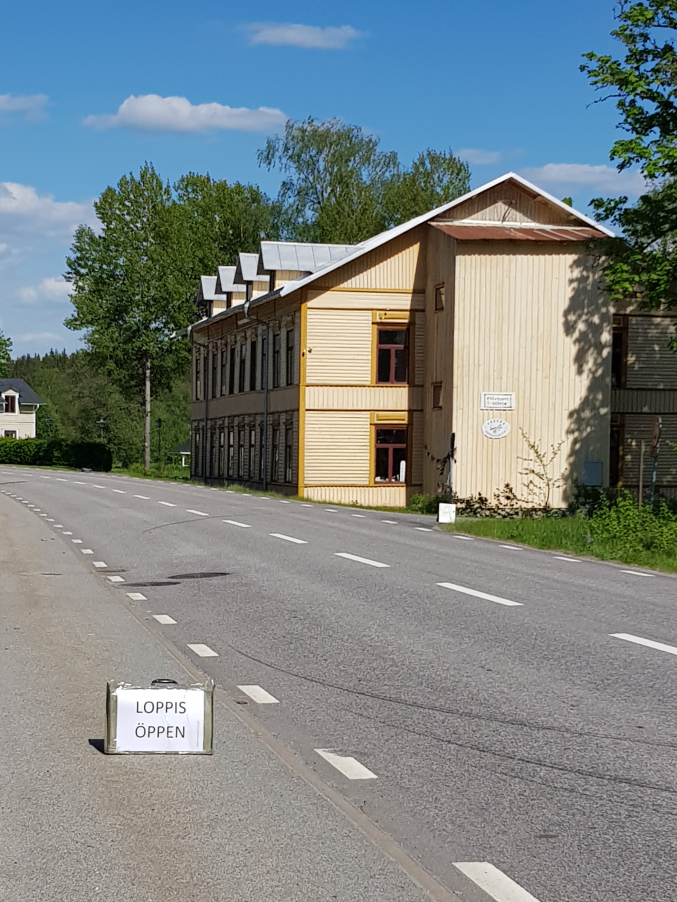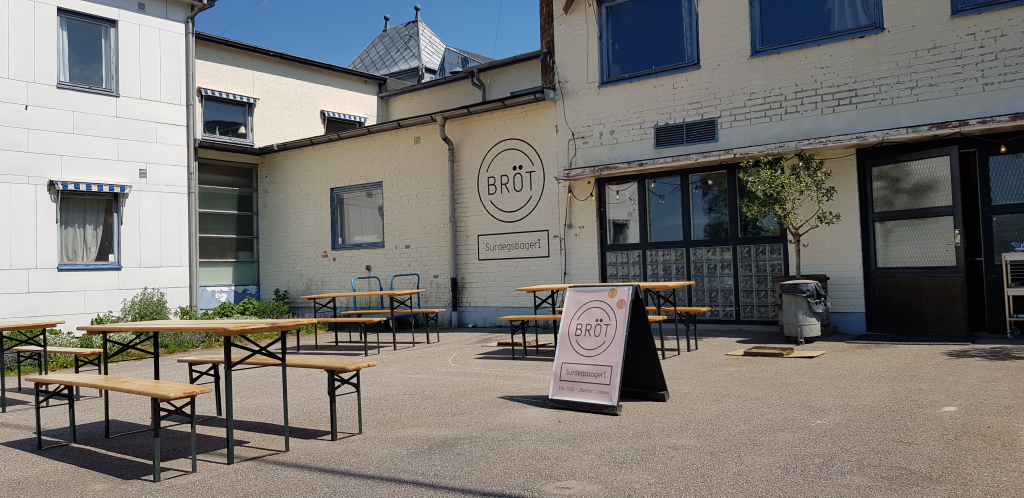Uddebo is a small village in southwest Sweden. At first sight, there is nothing particularly remarkable about the place. The main road cuts right through the village, busily carrying traffic to the next large town and beyond. Houses, some large and old, line the road, joined by an old warehouse building from the 19thcentury. Aside from one or two dog walkers and the occasional cyclist, all seems quiet – a peaceful village in the Swedish countryside.
However, such a first impression of Uddebo can be misleading. Whilst the casual visitor might be inclined to think there is nothing much here, there is, in fact, a lot going on. However, it’s not the kind of activity advertised by big signs and crowds of people – rather, it is part of the fabric of everyday village life, and only becomes visible when, instead of hurrying through, you stop and stay a while.
This was indeed my experience when I arrived in Uddebo for PhD fieldwork last summer. Although I initially passed right through the village in the blink of an eye, once I found where I was going I started to notice the rich activity of life in the village.

In its heyday, Uddebo was a centre for the industrial production of high quality textiles. The industry shrank over time, and the industrial textile factory closed in 2012. The main source of employment gone, this left a village with lots of empty houses, large empty industrial spaces, and a lack of facilities, including the absence of a local shop that closed in the early 1990s. Despite what appears at first a story of decay, recent years have seen a turn around in the village, with the empty old buildings providing opportunities for transformation.
These old buildings in Uddebo – both residential and postindustrial spaces – are a source of much local value and use. Although Uddebo is certainly not “on the map” in terms of recognised heritage sites, the historic environment of the village nonetheless holds substantial significance for its residents. As such, the village is a case in point for paying attention to local heritage values. Paying attention to “everyday” heritage such as that of 19th – early 20th century buildings in Uddebo in fact casts light on the large range of values such spaces can hold.
Of course, to see this, we need to first understand the different values that heritage can support. Although early approaches to heritage focused on the ‘intrinsic’ values of heritage objects, more recent scholarship has shown that determining heritage value is not straightforward. Cultural heritage can hold many different values: not only may these values change over time, but the same heritage can embody different values simultaneously. Indeed, heritage value is contingent on the social, spatial and historical context (Mason 2008). One difference in value that has received significant attention in the literature is the difference between local and expert heritage values (Butland 2019). The greater weight given to expert values in many conventional heritage management contexts has come under critique from critical heritage studies scholars, identifying such expert weighting as part of an “Authorised Heritage Discourse” (AHD) (Smith 2006).
In Uddebo, it is clear that the historic buildings embody a diverse set of values for different actors. The old industrial textile factory is an excellent example. The empty factory was purchased in 2016 by a couple from Gothenburg, and it has since been transformed into a residence, sourdough bakery cafe and pizzeria, and studio spaces for several local artists. In undertaking this transformation, the original form and function of the building has been remembered and respected, the old being incorporated into the new, such as the new life given to the factory steam vent as the new benchtop for the pizzeria. Through this transformation, the building has acquired new use values – not only as a home or studio space, but also as a community hub. For the first time since the local store closed down, there is a place in the village to buy bread. The pizzeria attracts crowds of residents, providing an opportunity for the local farming business to sell their produce – grown in the field just opposite the factory – to those drawn to the bakery for pizza.

What is most striking about this village and the reuse of its empty buildings is the bottom-up nature of the activity. The transformation of the empty factory building into an important community gathering point was guided by the interests of new residents; it has also responded to existing needs and interests in the village such as in the provision of studio space for resident artists. Importantly, the significance of the heritage in Uddebo is in its “everydayness”: although these are not buildings of great historical significance, they nonetheless hold an important place in the village. The old textile factory is remembered with great pride but those remaining residents who once worked there: new value has been created through the transformation of the factory into a bakery and studio spaces. These different values co-exist, all without any official recognition or assessment.
In short, the village of Uddebo is a reminder to us heritage practitioners and planners not to forget the “everyday” heritage of places: for at this local scale, it is the everyday that makes the biggest difference in supporting places with thriving communities.
All photos by the author in May 2021
List of References:
Butland, R. (2019) ‘Managed Landscapes: The Social Construction of Scale at Angkor’. In Politics of Scale: New Directions in Critical Heritage Studies, edited by T. Lähdesmaki, S. Thomas, and Y. Zhu, 66–80. New York; Oxford: Berghahn Books.
Mason, R. (2008) ‘Assessing Values in Conservation Planning: Methodological Issues and Choices’. In The Heritage Reader, edited by G. Fairclough, R. Harrison, J. Jameson Jnr, and J. Schofield, 99–124. Oxon; New York: Routledge.
Smith, L. (2006) Uses of Heritage. Illustrated edition. New York: Routledge, Taylor & Francis Group.
